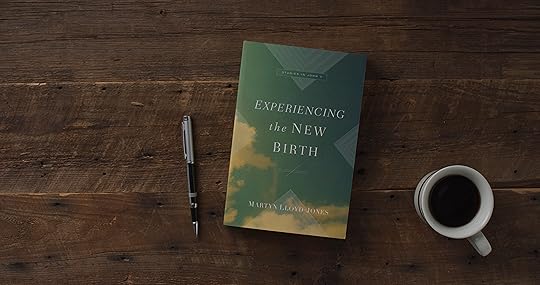Justin Taylor's Blog, page 17
May 28, 2020
12 Statements on Human Sexuality
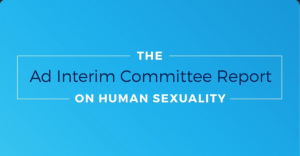
The publication of The Report of the Ad Interim Committee on Human Sexuality to the 48th Presbyterian Church in America General Assembly does not sound like thing of headlines or bedtime reading. But praise God for the Presbyterians and their orderly, parliamentarian ways. This committee—which includes Tim Keller, Kevin DeYoung, and Bryan Chapell, among others—has put together a very thorough and careful and important study in response to an overture asking them to address issues like the nature of sexual sin, temptation, and mortification, as well as the the propriety (or impropriety) of a Christians using the terminology of “gay Christian” or homosexual “orientation.” The entire thing repays saving and printing and reading and considering.
In the preamble, they note:
We must present “the whole Christ” when we both pastor individuals and speak to the world about sexuality and gender today. Jesus is full of grace and truth. In pastoral care we must not apply the truth so harshly as to be callously alienating or so indirectly that the truth is never clearly grasped.
The very form of the following Twelve Statements seeks to capture this “grace and truth” wholeness as we address the issues.
Each statement is dual, an associating of one truth with a concomitant truth or teaching.
The aim is not to achieve some kind of abstract intellectual balance or “third way,” but rather to show the path of theologically rich pastoring.
The paired truths help the pastor avoid the opposite errors of either speaking the truth without love or trying to love someone without speaking the truth.
The “grace and truth” path to which we point the church in this report is not an easy one. Speaking the truth yet doing it in love is nearly always harder than separating these needed aspects of the whole gospel into two alternatives. Speaking with grace and truth, in the process of our work together this year, we on your Ad-Interim Committee have been delighted to find a greater spirit and degree of oneness amongst ourselves than we would have expected. Our prayer is that our entire church may increasingly find that same “unity of the Spirit in the bond of peace” (Eph. 4:3).
I’ve included below the 12 main statements, but I have not replicated the footnotes, nor all of the material that substantiates the arguments. To that I would refer you to the full report.
1. Marriage
We affirm that marriage is to be between one man and one woman (Gen. 2:18-25; Matt. 19:4-6; WCF 24.1). Sexual intimacy is a gift from God to be cherished and is reserved for the marriage relationship between one man and one woman (Prov. 5:18-19). Marriage was instituted by God for the mutual help and blessing of husband and wife, for procreation and the raising together of godly children, and to prevent sexual immorality (Gen. 1:28; 2:18; Mal. 2:14-15; 1 Cor. 7:2, 9; WCF 24.2). Marriage is also a God-ordained picture of the differentiated relationship between Christ and the church (Eph. 5:22-33; Rev. 19:6-10). All other forms of sexual intimacy, including all forms of lust and same-sex sexual activity of any kind, are sinful (Lev. 18:22; 20:13; Rom. 1:18-32; 1 Cor. 6:9; 1 Tim. 1:10; Jude 7; WLC 139).
Nevertheless, we do not believe that sexual intimacy in marriage automatically eliminates unwanted sexual desires, nor that all sex within marriage is sinless (WCF 6.5).
We all stand in need of God’s grace for sexual sin and temptation, whether married or not. Moreover, sexual immorality is not an unpardonable sin. There is no sin so small it does not deserve damnation, and no sin so big it cannot be forgiven (WCF 15.4). There is hope and forgiveness for all who repent of their sin and put their trust in Christ (Matt. 11:28-30; John 6:35, 37; Acts 2:37-38; 16:30-31).
2. Image of God
We affirm that God created human beings in his image as male and female (Gen. 1:26-27).
Likewise, we recognize the goodness of the human body (Gen. 1:31; John 1:14) and the call to glorify God with our bodies (1 Cor. 6:12-20). As a God of order and design, God opposes the confusion of man as woman and woman as man (1 Cor. 11:14-15). While situations involving such confusion can be heartbreaking and complex, men and women should be helped to live in accordance with their biological sex.
Nevertheless, we ought to minister compassionately to those who are sincerely confused and disturbed by their internal sense of gender identity (Gal. 3:1; 2 Tim. 2:24-26).
We recognize that the effects of the Fall extend to the corruption of our whole nature (WSC 18), which may include how we think of our own gender and sexuality. Moreover, some persons, in rare instances, may possess an objective medical condition in which their anatomical development may be ambiguous or does not match their genetic chromosomal sex. Such persons are also made in the image of God and should live out their biological sex, insofar as it can be known.
3. Original Sin
We affirm that from the sin of our first parents we have received an inherited guilt and an inherited depravity (Rom. 5:12-19; Eph. 2:1-3).
From this original corruption—which is itself sinful and for which we are culpable—proceed all actual transgressions. All the outworkings of our corrupted nature (a corruption which remains, in part, even after regeneration) are truly and properly called sin (WCF 6.1-5). Every sin, original and actual, deserves death and renders us liable to the wrath of God (Rom. 3:23; James 2:10; WCF 6.6). We must repent of our sin in general and our particular sins, particularly (WCF 15.5). That is, we ought to grieve for our sin, hate our sin, turn from our sin unto God, and endeavor to walk with God in obedience to his commandments (WCF 15.2).
Nevertheless, God does not wish for believers to live in perpetual misery for their sins, each of which are pardoned and mortified in Christ (WCF 6.5).
By the Spirit of Christ, we are able to make spiritual progress and to do good works, not perfectly, but truly (WCF 16.3). Even our imperfect works are made acceptable through Christ, and God is pleased to accept and reward them as pleasing in his sight (WCF 16.6).
4. Desire
We affirm not only that our inclination toward sin is a result of the Fall, but that our fallen desires are in themselves sinful (Rom 6:11-12; 1 Peter 1:14; 2:11).
The desire for an illicit end—whether in sexual desire for a person of the same sex or in sexual desire disconnected from the context of Biblical marriage—is itself an illicit desire. Therefore, the experience of same-sex attraction is not morally neutral; the attraction is an expression of original or indwelling sin that must be repented of and put to death (Rom. 8:13).
Nevertheless, we must celebrate that, despite the continuing presence of sinful desires (and even, at times, egregious sinful behavior), repentant, justified, and adopted believers are free from condemnation through the imputed righteousness of Christ (Rom. 8:1; 2 Cor. 5:21) and are able to please God by walking in the Spirit (Rom. 8:3-6).
5. Concupiscence
We affirm that impure thoughts and desires arising in us prior to and apart from a conscious act of the will are still sin.
We reject the Roman Catholic understanding of concupiscence whereby disordered desires that afflict us due to the Fall do not become sin without a consenting act of the will. These desires within us are not mere weaknesses or inclinations to sin but are themselves idolatrous and sinful.
Nevertheless, we recognize that many persons who experience same-sex attraction describe their desires as arising in them unbidden and unwanted.
We also recognize that the presence of same-sex attraction is often owing to many factors, which always include our own sin nature and may include being sinned against in the past. As with any sinful pattern or propensity—which may include disordered desires, extramarital lust, pornographic addictions, and all abusive sexual behavior—the actions of others, though never finally determinative, can be significant and influential. This should move us to compassion and understanding. Moreover, it is true for all of us that sin can be both unchosen bondage and idolatrous rebellion at the same time. We all experience sin, at times, as a kind of voluntary servitude (Rom. 7:13-20).
6. Temptation
We affirm that Scripture speaks of temptation in different ways.
There are some temptations God gives us in the form of morally neutral trials, and other temptations God never gives us because they arise from within as morally illicit desires (James 1:2, 13-14). When temptations come from without, the temptation itself is not sin, unless we enter into the temptation. But when the temptation arises from within, it is our own act and is rightly called sin.
Nevertheless, there is an important degree of moral difference between temptation to sin and giving in to sin, even when the temptation is itself an expressing of indwelling sin.
While our goal is the weakening and lessening of internal temptations to sin, Christians should feel their greatest responsibility not for the fact that such temptations occur but for thoroughly and immediately fleeing and resisting the temptations when they arise. We can avoid “entering into” temptation by refusing to internally ponder and entertain the proposal and desire to actual sin. Without some distinction between (1) the illicit temptations that arise in us due to original sin and (2) the willful giving over to actual sin, Christians will be too discouraged to “make every effort” at growth in godliness and will feel like failures in their necessary efforts to be holy as God is holy (2 Peter 1:5-7; 1 Peter 1:14-16). God is pleased with our sincere obedience, even though it may be accompanied with many weaknesses and imperfections (WCF 16.6).
7. Sanctification
We affirm that Christians should flee immoral behavior and not yield to temptation.
By the power of the Holy Spirit working through the ordinary means of grace, Christians should seek to wither, weaken, and put to death the underlying idolatries and sinful desires that lead to sinful behavior. The goal is not just consistent fleeing from, and regular resistance to, temptation, but the diminishment and even the end of the occurrences of sinful desires through the reordering of the loves of one’s heart toward Christ. Through the virtue of Christ’s death and resurrection, we can make substantial progress in the practice of true holiness, without which no man shall see the Lord (Rom. 6:14-19; Heb. 12:14; 1 John 4:4; WCF 13.1).
Nevertheless, this process of sanctification—even when the Christian is diligent and fervent in the application of the means of grace—will always be accompanied by many weaknesses and imperfections (WCF 16.5, 6), with the Spirit and the flesh warring against one another until final glorification (WCF 13.2).
The believer who struggles with same-sex attraction should expect to see the regenerate nature increasingly overcome the remaining corruption of the flesh, but this progress will often be slow and uneven. Moreover, the process of mortification and vivification involves the whole person, not simply unwanted sexual desires. The aim of sanctification in one’s sexual life cannot be reduced to attraction to persons of the opposite sex (though some persons may experience movement in this direction), but rather involves growing in grace and perfecting holiness in the fear of God (WCF 13.3).
8. Impeccability
We affirm the impeccability of Christ.
The incarnate Son of God neither sinned (in thought, word, deed, or desire) nor had the possibility of sinning. Christ experienced temptation passively, in the form of trials and the devil’s entreaties, not actively, in the form of disordered desires. Christ had only the suffering part of temptation, where we also have the sinning part. Christ had no inward disposition or inclination unto the least evil, being perfect in all graces and all their operations at all times.
Nevertheless, Christ endured, from without, real soul-wrenching temptations which qualified him to be our sympathetic high priest (Heb. 2:18; 4:15).
Christ assumed a human nature that was susceptible to suffering and death. He was a man of sorrows and acquainted with grief (Isa. 53:3).
9. Identity
We affirm that the believer’s most important identity is found in Christ (Rom. 8:38-39; Eph. 1:4, 7).
Christians ought to understand themselves, define themselves, and describe themselves in light of their union with Christ and their identity as regenerate, justified, holy children of God (Rom. 6:5-11; 1 Cor. 6:15-20; Eph. 2:1-10). To juxtapose identities rooted in sinful desires alongside the term “Christian” is inconsistent with Biblical language and undermines the spiritual reality that we are new creations in Christ (2 Cor. 5:17).
Nevertheless, being honest about our sin struggles is important.
While Christians should not identify with their sin so as to embrace it or seek to base their identity on it, Christians ought to acknowledge their sin in an effort to overcome it. There is a difference between speaking about a phenomenological facet of a person’s sin-stained reality and employing the language of sinful desires as a personal identity marker. That is, we name our sins, but are not named by them. Moreover, we recognize that there are some secondary identities, when not rooted in sinful desires or struggles against the flesh, that can be legitimately affirmed along with our primary identity as Christians. For example, the distinctions between male and female, or between various nationalities and people groups, are not eradicated in becoming Christians, but serve to magnify the glory of God in his plan of salvation (Gen. 1:27; 1 Peter 3:7; Rev. 5:9; 7:9-10).
9. Language
We affirm that those in our churches would be wise to avoid the term “gay Christian.”
Although the term “gay” may refer to more than being attracted to persons of the same sex, the term does not communicate less than that. For many people in our culture, to self-identify as “gay” suggests that one is engaged in homosexual practice. At the very least, the term normally communicates the presence and approval of same-sex sexual attraction as morally neutral or morally praiseworthy. Even if “gay,” for some Christians, simply means “same-sex attraction,” it is still inappropriate to juxtapose this sinful desire, or any other sinful desire, as an identity marker alongside our identity as new creations in Christ.
Nevertheless, we recognize that some Christians may use the term “gay” in an effort to be more readily understood by non-Christians.
The word “gay” is common in our culture, and we do not think it wise for churches to police every use of the term. Our burden is that we do not justify our sin struggles by affixing them to our identity as Christians. Churches should be gentle, patient, and intentional with believers who call themselves “gay Christians,” encouraging them, as part of the process of sanctification, to leave behind identification language rooted in sinful desires, to live chaste lives, to refrain from entering into temptation, and to mortify their sinful desires.
11. Friendship
We affirm that our contemporary ecclesiastical culture has an underdeveloped understanding of friendship and often does not honor singleness as it should.
The church must work to see that all members, including believers who struggle with same-sex attraction, are valued members of the body of Christ and engaged in meaningful relationships through the blessings of the family of God. Likewise we affirm the value of Christians who share common struggles gathering together for mutual accountability, exhortation, and encouragement.
Nevertheless, we do not support the formation of exclusive, contractual marriage-like friendships, nor do we support same-sex romantic behavior or the assumption that certain sensibilities and interests are necessarily aspects of a gay identity.
We do not consider same-sex attraction a gift in itself, nor do we think this sin struggle, or any sin struggle, should be celebrated in the church.
12. Repentance and Hope
We affirm that the entire life of the believer is one of repentance.
Where we have mistreated those who struggle with same-sex attraction, or with any other sinful desires, we call ourselves to repentance. Where we have nurtured or made peace with sinful thoughts, desires, words, or deeds, we call ourselves to repentance. Where we have heaped upon others misplaced shame or have not dealt well with necessary God-given shame, we call ourselves to repentance.
Nevertheless, as we call ourselves to the evangelical grace of repentance (WCF 15.1), we see many reasons for rejoicing (Phil. 4:1).
We give thanks for penitent believers who, though they continue to struggle with same-sex attraction, are living lives of chastity and obedience. These brothers and sisters can serve as courageous examples of faith and faithfulness, as they pursue Christ with a long obedience in gospel dependence. We also give thanks for ministries and churches within our denomination that minister to sexual strugglers (of all kinds) with Biblical truth and grace. Most importantly, we give thanks for the gospel that can save and transform the worst of sinners—older brothers and younger brothers, tax collectors and Pharisees, insiders and outsiders. We rejoice in ten thousand spiritual blessings that are ours when we turn from sin by the power of the Spirit, trust in the promises of God, and rest upon Christ alone for justification, sanctification, and eternal life (WCF 14.2).
Four Contours of a Christian Political Theology

David VanDrunen, in his new book Politics after Christendom: Political Theology in a Fractured World (Zondervan, 2020), argues that God has ordained civil government—as the ruling authority of political communities—to be legitimate but provisional and to be common but accountable.
Some notes:
1. Political Institutions Are Legitimate.
God himself has ordained the existence and authority of our civil laws, governments, and officials.
Civil government has a right and even an obligation to carry out its proper work.
Civil government’s proper work is to promote justice.
Thus when civil governments and political officials promote justice within a particular society, they are not engaging in an act of usurpation but exercising legitimate authority.
Although they may come to power by different routes, furthermore, God is the ultimate source of their legitimacy.
2. But Political Institutions Are Also Provisional.
God has ordained them not as enduring bodies that will govern us in the new creation but as temporary bodies meant to promote a measure of peace and justice in this present, fallen world.
“Provisional” refers to something set in place for a limited time and purpose until something greater arrives.
It is a valuable institution but not of highest value. It is penultimate rather than ultimate.
Only the kingdom of the Lord Jesus Christ, inchoately manifest now in the church and climatically revealed in the New Jerusalem, is of ultimate value and importance.
3. Political Institutions Are Common.
God did not establish these institutions simply for the benefit of Christians, or simply for the benefit of people from a certain location or ethnicity, but for the benefit of all humans alike.
God has ordained civil government to wield authority in political communities for the benefit of the human race in common. Government is not for some sorts of people rather than other sorts. One type of government is not to serve those of one ethnic or religious identity and an essentially different type of government to serve those of a different identity.
4. But Political Institutions Are Also Accountable.
These institutions are under God’s law and God’s authority. He established them to promote peace and justice, and thus political institutions must ultimately answer to God himself.
Civil governments should not be, and in fact, cannot be, neutral.
The way to achieve and maintain commonality is not by seeking a legal framework that makes no moral judgments and is hence independent of any philosophical or theological perspective.
Instead, civil governments are accountable to God and his standards of justice.
Therefore, a Christian political theology ought to teach and defend simultaneously that God designed civil governments to be common but accountable.
May 26, 2020
New Releases from Crossway in May

Below is a list of the new and notable resources releasing from Crossway this month. Titles include A Place to Belong: Learning the Love the Local Church by Megan Hill, When Doctrine Divides the People Of God: An Evangelical Approach to Theological Diversity by Rhyne Putman, and Exploring the Bible Together: A 52-Week Family Worship Plan by David Murray.
A Place to Belong: Learning the Love the Local Church
The church has more beauty—and more value—than we can see with physical eyes. Though our congregations are made up of ordinary people engaged in predictable practices, we are an outpost of heaven itself. The church is the people of God, the dwelling place of the Spirit, and the fullness of Christ. With rich theology and practical direction, A Place to Belong invites us to experience the local church in light of the Bible’s testimony. Considering nine biblical terms for the church—such as beloved, brothers and sisters, saints, and gospel partners—this book equips us to love and serve one another. Whether we are new Christians or mature believers, learning to love the local church can become one of our greatest privileges and highest joys. The church is where we belong.
“A thousand messengers point us to the good news of a personal relationship with Christ, but this book contains something precious: the good news of a corporate one. Megan Hill has written a love song for the church, a celebration of the communion of saints in all its present practicality and all its future glory. Her message stirred me to greater love for the fellowship of believers and greater longing for the day when Christ and his bride are at last fully and finally united.”
—Jen Wilkin, Bible teacher; author, Women of the Word; None Like Him; and In His Image
When Doctrine Divides the People Of God: An Evangelical Approach to Theological Diversity
As evangelicals, we desire to be biblical—we want our doctrine to be rooted in the Bible, our lives to be guided by the Bible, and our disagreements to be resolved by the Bible. And yet, conflicts within our church communities continue to appear and seemingly multiply with time. Interpretations of the Bible and deeply held convictions often put Christians at odds. Encouraging us toward grace in disagreement and firmness in truth, Rhyne Putman reflects on how Christians can maintain the biblical call for unity despite having genuine disagreements.
“Many have wondered how Christians who read the same Bible can come to such different conclusions about what it means. Rhyne Putman not only provides a thorough answer to that question; he also helps us live more peaceably and fruitfully amidst our differences. This helpful book will encourage Christians to hold their convictions with greater irenicism, humility, awareness, and wisdom.”
—Gavin Ortlund, Senior Pastor, First Baptist Church of Ojai; author, Finding the Right Hills to Die On
Exploring the Bible Together: A 52-Week Family Worship Plan
Kids love adventure. From building an imaginary fort in the backyard to searching for buried treasure, the anticipation of discovering the unknown fills them with excitement. David Murray presents a 52-week family worship plan that captures this excitement through brief and accessible daily devotions as families explore the Bible together.
“David Murray has constructed a fabulous tool for family worship. This is more than just a year’s worth of assigned daily Bible readings followed by additional material you read to your children (though that’s valuable). Exploring the Bible Together is interactive (thus ‘together’), for it also supplies questions about the Bible passage. Beyond that, there’s a question for younger children and a more thought-provoking one for older children. But wait—there’s more! Murray also summarizes the main point your children should take from the text and suggests a simple way to pray toward that end. And he’s done it all in a format that can be completed in just a few minutes. If you’re looking for a sound, simple, no-prep guide to teach the Bible to your children, you’ve found it.”
—Donald S. Whitney, Professor of Biblical Spirituality and Associate Dean, The Southern Baptist Theological Seminary; author, Family Worship; Praying the Bible; and Spiritual Disciplines for the Christian Life
Experiencing the New Birth: Studies in John 3
Dr. Martyn Lloyd-Jones, the famed Welsh minister, is widely hailed as one of the greatest preachers of the last 100 years. Over the course of his career, “the Doctor” preached 28 sermons on the third chapter of the Gospel of John. However, until now, these sermons have remained unpublished and largely out of reach of today’s Christians.
Reflecting on the powerful story of Jesus’s encounter with Nicodemus and what it means to be “born again,” this collection of biblical expositions highlights God’s stunning love for the world as expressed through his unique Son, Jesus Christ. Readers will be encouraged to turn to the One who promises eternal life to all who trust in him.
“Lloyd-Jones’s preaching was based on deep reading and scholarship, yet it was accessible to everyone—it stirred the affections and changed the heart.”
—Timothy Keller, Founding Pastor, Redeemer Presbyterian Church, New York City; Chairman and Cofounder, Redeemer City to City
Crossway May Releases

Below is a list of the new and notable resources releasing from Crossway this month. Titles include A Place to Belong: Learning the Love the Local Church by Megan Hill, When Doctrine Divides the People Of God: An Evangelical Approach to Theological Diversity by Rhyne Putman, and Exploring the Bible Together: A 52-Week Family Worship Plan by David Murray.
A Place to Belong: Learning the Love the Local Church
The church has more beauty—and more value—than we can see with physical eyes. Though our congregations are made up of ordinary people engaged in predictable practices, we are an outpost of heaven itself. The church is the people of God, the dwelling place of the Spirit, and the fullness of Christ. With rich theology and practical direction, A Place to Belong invites us to experience the local church in light of the Bible’s testimony. Considering nine biblical terms for the church—such as beloved, brothers and sisters, saints, and gospel partners—this book equips us to love and serve one another. Whether we are new Christians or mature believers, learning to love the local church can become one of our greatest privileges and highest joys. The church is where we belong.
“A thousand messengers point us to the good news of a personal relationship with Christ, but this book contains something precious: the good news of a corporate one. Megan Hill has written a love song for the church, a celebration of the communion of saints in all its present practicality and all its future glory. Her message stirred me to greater love for the fellowship of believers and greater longing for the day when Christ and his bride are at last fully and finally united.”
—Jen Wilkin, Bible teacher; author, Women of the Word; None Like Him; and In His Image
When Doctrine Divides the People Of God: An Evangelical Approach to Theological Diversity
As evangelicals, we desire to be biblical—we want our doctrine to be rooted in the Bible, our lives to be guided by the Bible, and our disagreements to be resolved by the Bible. And yet, conflicts within our church communities continue to appear and seemingly multiply with time. Interpretations of the Bible and deeply held convictions often put Christians at odds. Encouraging us toward grace in disagreement and firmness in truth, Rhyne Putman reflects on how Christians can maintain the biblical call for unity despite having genuine disagreements.
“Many have wondered how Christians who read the same Bible can come to such different conclusions about what it means. Rhyne Putman not only provides a thorough answer to that question; he also helps us live more peaceably and fruitfully amidst our differences. This helpful book will encourage Christians to hold their convictions with greater irenicism, humility, awareness, and wisdom.”
—Gavin Ortlund, Senior Pastor, First Baptist Church of Ojai; author, Finding the Right Hills to Die On
Exploring the Bible Together: A 52-Week Family Worship Plan
Kids love adventure. From building an imaginary fort in the backyard to searching for buried treasure, the anticipation of discovering the unknown fills them with excitement. David Murray presents a 52-week family worship plan that captures this excitement through brief and accessible daily devotions as families explore the Bible together.
“David Murray has constructed a fabulous tool for family worship. This is more than just a year’s worth of assigned daily Bible readings followed by additional material you read to your children (though that’s valuable). Exploring the Bible Together is interactive (thus ‘together’), for it also supplies questions about the Bible passage. Beyond that, there’s a question for younger children and a more thought-provoking one for older children. But wait—there’s more! Murray also summarizes the main point your children should take from the text and suggests a simple way to pray toward that end. And he’s done it all in a format that can be completed in just a few minutes. If you’re looking for a sound, simple, no-prep guide to teach the Bible to your children, you’ve found it.”
—Donald S. Whitney, Professor of Biblical Spirituality and Associate Dean, The Southern Baptist Theological Seminary; author, Family Worship; Praying the Bible; and Spiritual Disciplines for the Christian Life
Experiencing the New Birth: Studies in John 3
Dr. Martyn Lloyd-Jones, the famed Welsh minister, is widely hailed as one of the greatest preachers of the last 100 years. Over the course of his career, “the Doctor” preached 28 sermons on the third chapter of the Gospel of John. However, until now, these sermons have remained unpublished and largely out of reach of today’s Christians.
Reflecting on the powerful story of Jesus’s encounter with Nicodemus and what it means to be “born again,” this collection of biblical expositions highlights God’s stunning love for the world as expressed through his unique Son, Jesus Christ. Readers will be encouraged to turn to the One who promises eternal life to all who trust in him.
“Lloyd-Jones’s preaching was based on deep reading and scholarship, yet it was accessible to everyone—it stirred the affections and changed the heart.”
—Timothy Keller, Founding Pastor, Redeemer Presbyterian Church, New York City; Chairman and Cofounder, Redeemer City to City
Song of the Day: I Will Rise
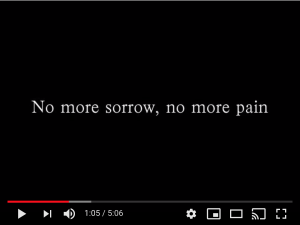
In loving memory of my friend, J Chad Simington (1975–2020).
Faith is now sight.
The darkness is now light.
No more sorrow.
No more pain.
May 19, 2020
Why Do We Call Them the “Formal” and “Material” Principles of the Reformation?

The other day I was reading a chapter for a friend, and he mentioned the material and formal principles of the Reformation. My editorial suggestion was that he define the terms, since not everyone knows what they mean.
Later I realized that I had never stopped to ask who came up with this terminology. I know the concepts go back to Aristotle, but when did they begin to be applied to the heart of the Protestant Reformation?
So here’s a quick overview.
What Is the “Material Principle” of the Reformation?
The material principle of the Reformation is justification by grace alone (sola gratia) through faith alone (sola fide).
It’s hard to improve upon the Westminster Longer Catechism’s definition: for elect believers, God “pardons all their sins, accepts and accounts their persons righteous in his sight; not for any thing wrought in them, or done by them, but only for the perfect obedience and full satisfaction of Christ, by God imputed to them, and received by faith alone” (WLC 70).
What Is the “Formal Principle” of the Reformation?
The formal principle of the Reformation is Scripture alone (sola Scriptura).
In other words: “Scripture is to be understood as the sole source of divine revelation, the only inspired, infallible, final, and authoritative norm of faith and practice.”
Who Came Up with This Language?
The terms have been traced back to the German Lutheran theologian August Twesten (1789–1876), a former student of Frederich Schleirmacher who became his successor at the University of Berlin. He described the principles of the Reformation this way in Vorlesungen über die Dogmatik der evangelisch-lutherischen Kirche (Hamburg: Perthes, 1826).
The terminology came into the common academic lexicon a generation later when used by Albrecht Ritschl in Die christliche Lehre von der Rechtfertigung und Versöhnung (Bonn: A. Marcus, 1870).
What Does All of This Have to Do with Aristotle?
The terms material and formal can be a bit confusing, even misleading, in English, because we tend to think that the opposite of formal is informal, and the opposite of material is immaterial.
We need to go back to the Greek philosopher, Aristotle (384–322 BC), the student of Plato and the tutor of Alexander the Great. (In terms of the biblical timeline, Aristotle lived during the intertestamental period, the years of silence between the Old and New Testaments.)
If philosophy “consists of a series of footnotes to Plato” (A.N. Whitehead), then Aristotle is “the primary footnote to Plato” (Peter Kreeft).
If you asked Aristotle why something is the way that it is, he would point out that we can mean four different things when we ask for the cause or reason or explanation (Greek: αἰτία) of a substance.
In other words, “because” can be answered in four different ways because there are four different ways to explain it.
Let’s take a table as an example. If someone says, “What makes a table?” they could be asking four different types of things:
What is a table made out of?
What is the form or essence or pattern makes something a table?
What produces or leads to a table?
What is a table for?
And we might answer:
A table is made out of wood.
A table is made by having four legs support a flat surface.
A table is made by a carpenter.
A table is made for eating.
Though Aristotle didn’t use the following terminology, he did use these concepts:
The material cause is “that out of which” something is made.
The formal cause is the pattern or form of the object, that which comes together to make it into a particular thing.
The efficient cause is what led to it becoming what it is.
The final cause is the end/goal of the object, or what the object is good for.
Allison Spiegel offers this illustration:

Back to the Reformation
So now we can go back to the Reformation.
The material cause of the Reformation—that doctrine out of which the Reformation was made—is the doctrine of justification by grace alone through faith alone. As Luther said, “if this article [of justification] stands, the church stands; if this article collapses, the church collapses” (WA 40/3.352.3).
The formal cause of the Reformation—the form or pattern or structure or direction that determined the Reformation—is the doctrine of Scripture alone as our final authority in faith and practice. Without Scripture, we would not know that justification is precious and true.
So the next time you hear these terms, you may not remember the name of Twesten, or may not remember how to parse the Aristotelian Four Causes, but do remember that Scripture forms the doctrine, the material, of the movement that sought to reform the church to its biblical roots to the glory of God alone.
Ravi Zacharias (1946–2020)

Today Sarah Davis, the CEO of Ravi Zacharias International Ministries, announced that God has called her father, Ravi Zacharias, to his eternal rest.
Today we affirm, as my dad recited and Baxter penned, “But ‘tis enough that Christ knows all, and I shall be with Him.” My dad, at 74, has “join[ed] with the triumphant saints that sing [his] Savior’s praise.” We who knew and loved him celebrate his life, and more importantly, his Savior.:
It was his Savior, Jesus Christ, that my dad always wanted most to talk about. Even in his final days, until he lacked the energy and breath to speak, he turned every conversation to Jesus and what the Lord had done. He perpetually marveled that God took a seventeen-year-old skeptic, defeated in hopelessness and unbelief, and called him into a life of glorious hope and belief in the truth of Scripture—a message he would carry across the globe for 48 years.
She continues:
My dad’s humility, grace, tenderness for people, and above all love for the Lord are forever imprinted on my mind, my heart, and my life. His love for our family will be impossible to replace until we join him in heaven one day. Ravi and Margie just celebrated their 48th wedding anniversary. My mother was entirely committed to my dad’s calling and to this ministry, believing God called them together. I cannot recall even one moment when I saw her commitment to this calling weaken, because she always placed unwavering trust in the God who called them and in His purposes.
 She concludes:
She concludes:
The Gospel of John records these words of Jesus: “Because I live, you also will live” (14:19)—seven words that changed the trajectory of Ravi Zacharias’s life some 57 years ago. It is a verse etched on his grandmother’s grave stone and will be etched on his too. Today my beautiful father is more alive than he has ever been. We thank God for him and recommit our lives to sharing this truth with all who will hear, until He calls us to our eternal home.
The ministry’s obituary of their founder can be read online here, which tells his life story and calling. Here is an excerpt:
It was the culmination of a remarkable transformation set in motion when Zacharias, recovering in a Delhi hospital from a suicide attempt at age 17, was read the words of Jesus recorded in the Bible by the apostle John: “Because I live, you will also live.” In response, Zacharias surrendered his life to Christ and offered up a prayer that if he emerged from the hospital, he would leave no stone unturned in his pursuit of truth. Once Zacharias found the truth of the gospel, his passion for sharing it burned bright until the very end. Even as he returned home from the hospital in Texas, where he had been undergoing chemotherapy, Zacharias was sharing the hope of Jesus to the three nurses who tucked him into his transport.
Perhaps the greatest way to honor Ravi Zacharias is to let him speak to us in his own words. I’ve embedded several videos below to show his ministry in action—whether addressing Christians, an individual skeptic, or the end of a long sit-down conversation with Jewish conservative pundit Ben Shapiro.
May 14, 2020
Song of the Day: “The Blessing”

“The LORD bless you and keep you;
the LORD make his face to shine upon you and be gracious to you;
the LORD lift up his countenance upon you and give you peace.”
—Numbers 6:24–26
May 12, 2020
The Trinity: Explain It to Me Like I’m a 2-Year-Old Edition
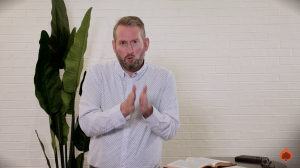
The first rule of Trinitarian Analogies is: please don’t.
The second rule is to refer to the first rule.
If you think think that perhaps a cloverleaf (three petals in one leaf!) or H20 (water, ice, and gas!) or a family man (one man who is father, son, and brother!) are exceptions, I would encourage you to go back and to read the first two rules above.
In the video above, pastor Sam Allberry of Immanuel Nashville does not analogize the Trinity but rather points us to a restrained way of understanding the building blocks of the doctrine, namely, the difference between nature (= what) and person (= who) as we seek to talk the language of biblical orthodoxy.
The doctrine of the Trinity entails that there is one God in three persons.
To use more technical language, we can say things like:
There is one divine nature (Greek: physis); one divine essence (Latin: esse, to be); one divine being (Greek: ousia, that which is); one divine substance (Latin: substantia, substance, concrete reality).
And there are three divine persons (Father, Son, Holy Spirit)—three personal, distinct, interrelated ways of being the one God.
You can see why it’s easier to start by saying three who’s and one what!
Properly put together, the Trinity leads us to at least four affirmations and four denials:
There is one God.
The Father is God.
The Son is God.
The Holy Spirit is God.
The Father is not the Son or the Holy Spirit.
The Son is not the Father or the Holy Spirit.
The Holy Spirit is not the Father or the Son.
There are not three gods.
The easiest way to get this at a glance is to diagram it:
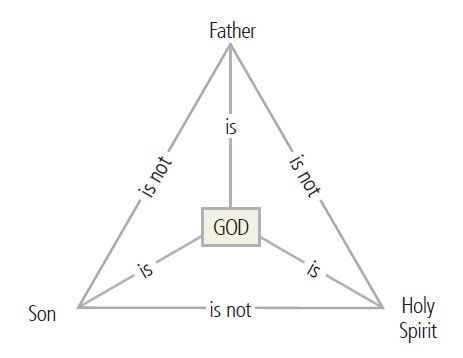
For further reading:
Phillip Graham Ryken and Michael LeFebvre, Our Triune God .
Fred Sanders, The Deep Things of God : How the Trinity Changes Everything. 2nd ed.
Robert Letham, The Holy Trinity: In Scripture, History, Theology, and Worship . 2nd ed.
Fred Sanders, The Triune God . New Studies in Dogmatics.
Scott Swain, The Trinity: An Introduction . Short Studies in Systematic Theology.
Finally, if you need help remember the first rule above, see:
May 11, 2020
Hymn of the Day: “Your Will Be Done”

Verse 1
Your will be done, my God and father
As in Heaven, so on earth
My heart is drawn to self exalting
Help me seek Your kingdom first
Chorus
As Jesus walked, so I shall walk
Held by Your same unchanging love
Be still my soul
Oh, lift your voice and pray
Father not my will but Yours be done
Verse 2
How in that garden he persisted
I may never fully know
The fearful weight of true obedience
It was held by him alone
Chorus
What wondrous faith, to bear that cross
To bear my sin, what wondrous love
My hope was sure
When there my Saviour prayed
Father not my will but Yours be done
Verse 3
When I am lost, when I am broken
In the night of fear and doubt
Still I will trust in my good Father
Yes, to one great King I bow!
Chorus
As Jesus rose, so I shall rise
In ransomed glory at the throne
My heart restored
With all your saints I sing
Father, not my will but Yours be done
Verse 4
As we go forth, our God and Father
Lead us daily in the fight
That all the world might see Your glory
And Your Name be lifted high
Chorus
And in this Name we overcome
For You shall see us safely home
Now as your church
We lift our voice and pray
Father, not my will but Yours be done
Rich Thompson, Jonny Robinson
CCLI: 71495667
Justin Taylor's Blog
- Justin Taylor's profile
- 44 followers





